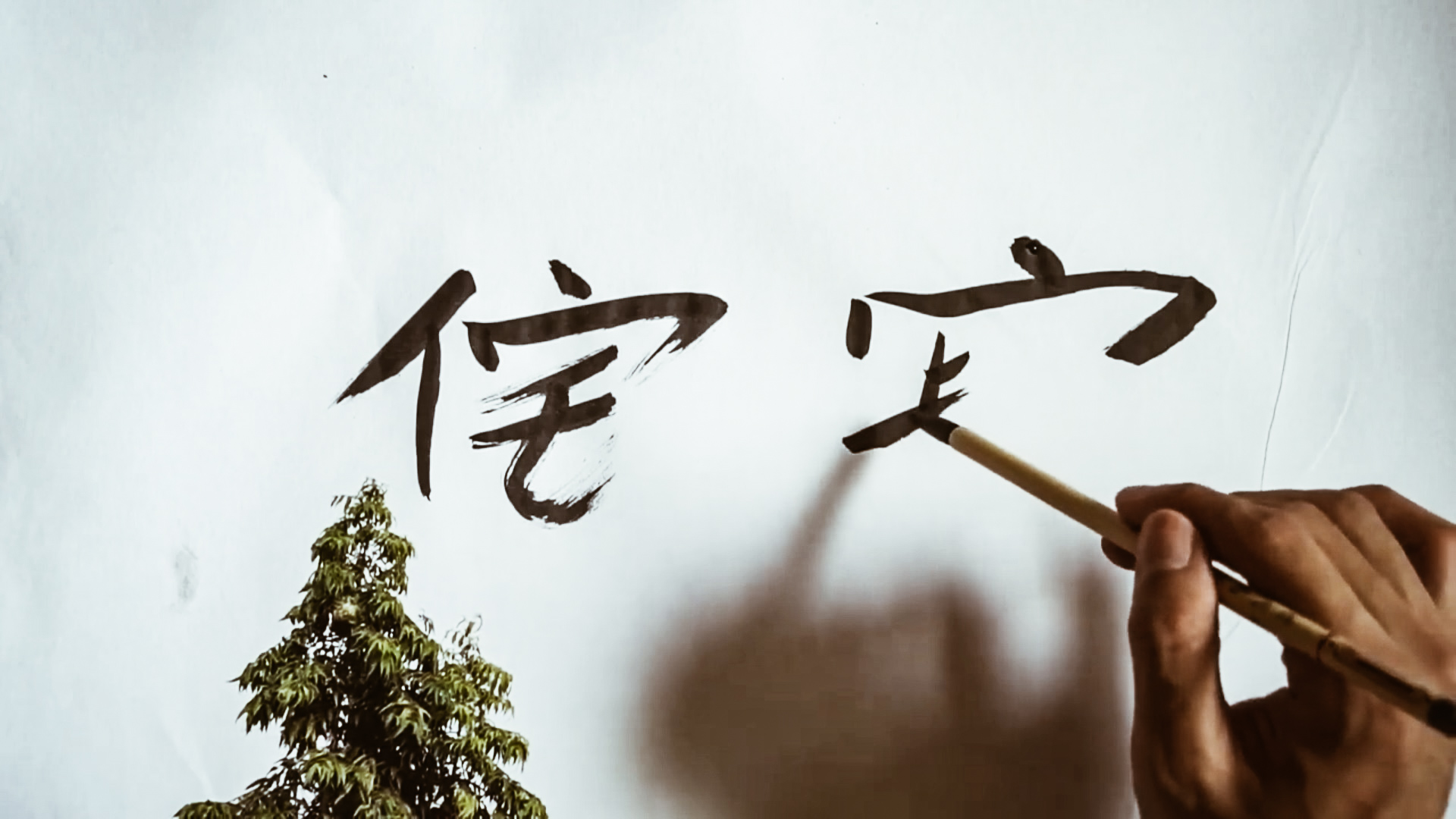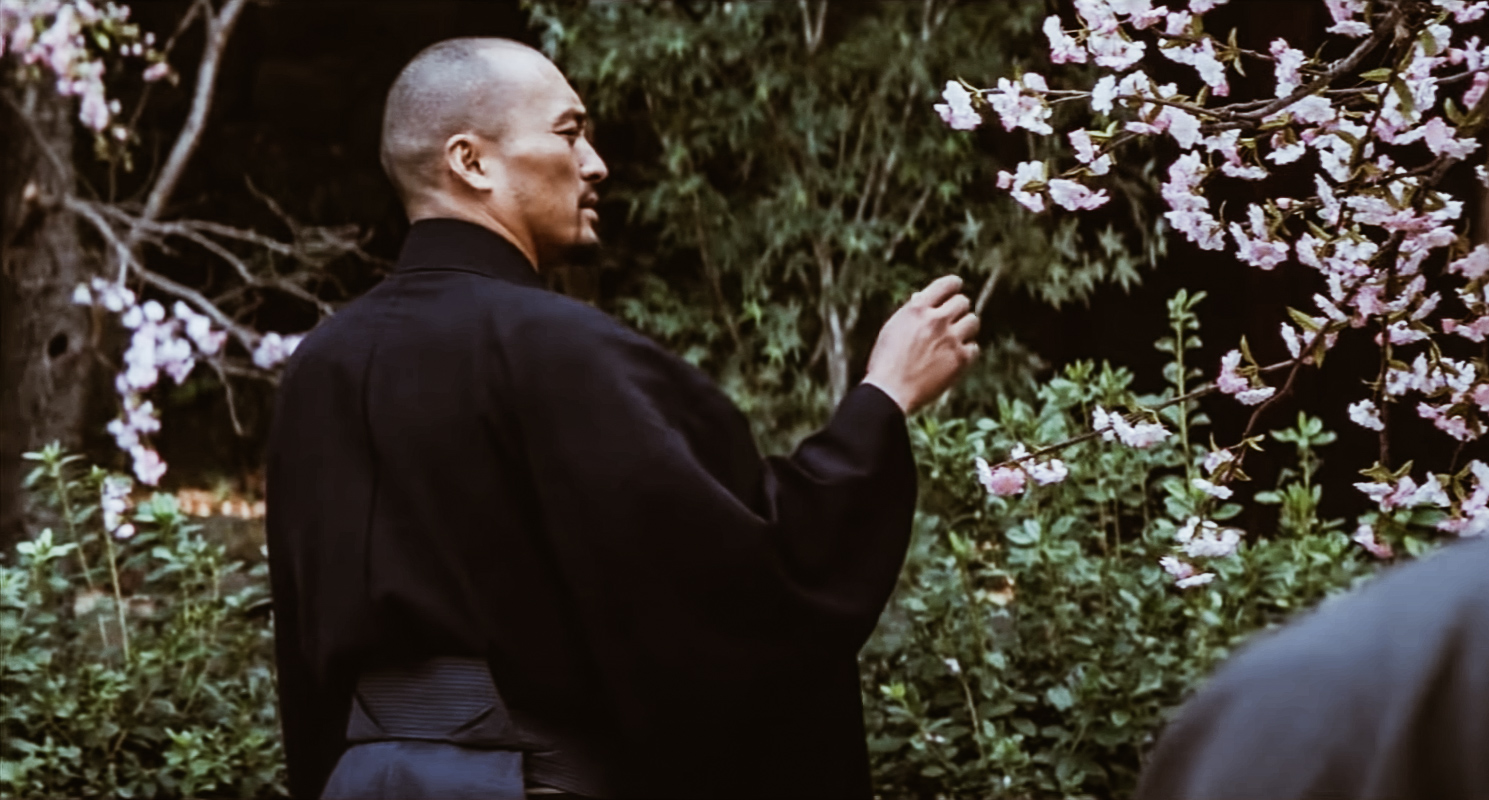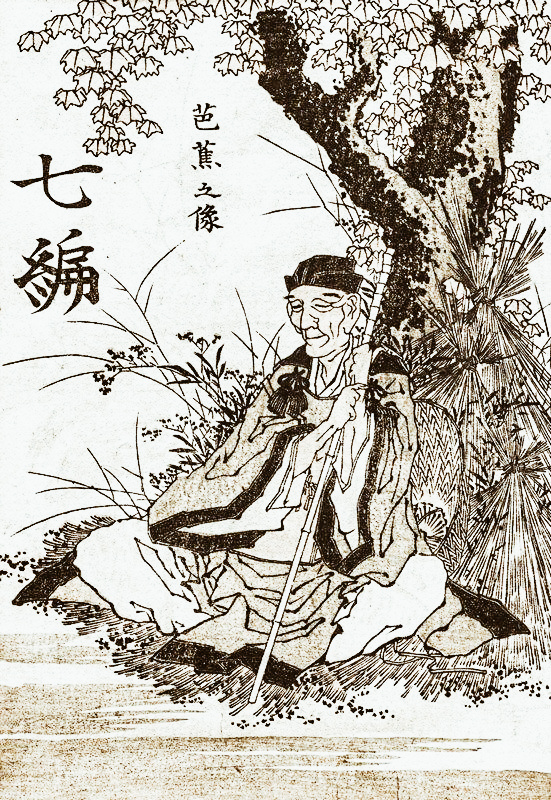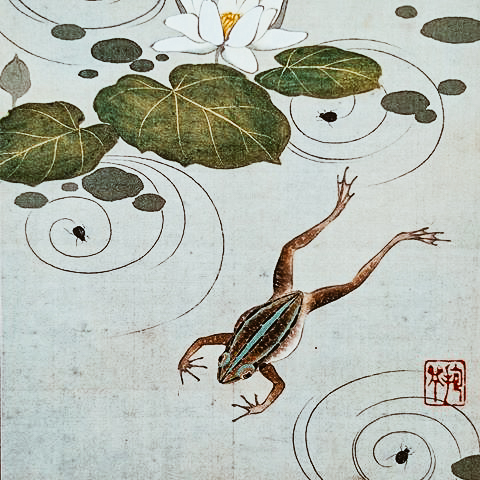What is Wabi-Sabi and why is it so fundamental for the Japanese? Accepting the natural cycle of growth and decay of reality. To grasp its meaning, its beauty. To live life as it is, without wanting to change its colours, and yet to fulfil your sense of life to the best of your potential. Japanese sensitivity and psychology could be traced back to these two elusive words alone.
Wabi-Sabi 侘寂 The most ineffable experience in the design of Imperfection
Guest Author: Flavia
In the world is often associated with design, but Wabi-Sabi is much more than that. Its origins are linked to those of the Tea Ceremony, therefore, the matrix once again is Zen.
It is actually an experience, translated into a worldview as well as a refined aesthetic sensibility, which would manifest itself when the highest form of something is achieved. A mix of emotions and feelings emerging from a state – an instant – of awareness that allows us to grasp the true nature of life’s lights and shadows. So when we speak of beauty from now on, it will be understood in a broad sense, not only as aesthetic beauty in the strict sense. Also because, it is an aesthetic consciousness that encompasses the outward appearance, but also transcends it.
It must be said immediately that, since it is a metaphysical concept that we have in our hands, any attempt to frame it in words once and for all will always be risky. Therefore, the best way to know it remains to experience it directly. The fathers of Wabi-Sabi themselves – immediately realizing that a cognitive approach would not be the most appropriate – used images or allegories to try to render the idea. Even the modern Japanese, when questioned about the definition, tend not to throw themselves into verbal transpositions without the slightest moment of doubt. Or, each one, gives a different explanation according to his own sensibility.
It is with this awareness, then, that today we propose to explore with you this concept as mysterious as ineffable.

photo credits: reddit.com
Imperfection, Impermanence and Incompleteness
It is the trinomial par excellence to which the Wabi-Sabi aesthetic is irremediably conducted and synthesized. It refers to the Buddhist vision of life, whereby the beauty of things does not lie in the absence of defects or in eternity – which is not of this world – but in their imperfect and ephemeral intrinsic characteristics.
However, there seems to be something more in what Wabi-Sabi seems to reveal: Imperfection, Impermanence and Incompleteness would be a point of departure rather than a point of arrival. They would be the basis to keep in mind, in our co-creation with reality, rather than the summit of the mountain to be reached. In other words, it would suggest to recognize reality as it is, to be realistic: not to insist on forcing it to be something that cannot be, that is, perfect. But at the same time it would suggest – and that’s the beauty of it – to do everything necessary to accomplish your task or role, given this base of imperfection, in the best possible way. Similar to what happens in Chadō, but on this, we will come back later.
Personally, I find that Impermanence and Incompleteness are also “sub-sets” of the mother concept of Imperfection. What else denote the impermanence and incompleteness of something if not its imperfection? Similar speech for the concepts of defect and beauty. They are different but they are also the same thing: the “ugly” can be referable to the size of the defect, ergo of the imperfection (which makes it beautiful). I believe that keeping this in mind helps to approach the Beauty discourse at 360°. Since Wabi-Sabi could refer as much to a work of art as to a situation or even a map.
Now, however, the time has come to finally get to know the terms Wabi and Sabi.
Wabi (侘) – Beauty and tranquillity in essentiality
Indicates a taste for simplicity and tranquility. From the linguistic point of view the Kanji – ideogram -「侘」è composed of the radical 「⺅」di person + 「宅」di home. Almost as if to visually indicate a person who, alone, is leaning against his little house. I use the verb “leaning” because that little man so placed inside a Kanji can be explained as if the little person was leaning against what is represented. Well, as we will see shortly, the original meaning of Wabi 侘 was one of loneliness.
The beauty promoted by Wabi is discreet by virtue of the presence of imperfections generated in a natural, spontaneous (never intentional!) way. Natural defects are the essential value of the object, the person or the situation. It makes them perfect … and consequently, beautiful. A rustic or not ostentatious beauty that prefers the natural instead of the artificial.
Natural defects find space where functionality – and not form as an end in itself – is the main criterion of life. In other words, in simplicity. On the contrary, in sumptuousness or complicity defects are invariably suppressed: beauty thus becomes an end in itself. The exasperated complicity then, tends to accumulate concepts, thoughts, forms etc., weighing down with complex tangles what could be essential and therefore even more functional. For these reasons, Wabi seems more oriented towards Incompleteness and Imperfection.

photo credits: youtube.com
Sabi (寂) – Beauty and quietness in the advance of time
The Kanji Sabi「寂」è given by the union of the radical tetto「宀」con kanji「叔」che may mean uncle or old or mature man. The suggested image is therefore that of a person in the final stage of his life under a roof. Going through the various meanings, the concept in the background refers in any case to an idea of decline or deterioration. The meaning of Sabi寂 is still today that of loneliness, desolation, calmness, maturity (think that the adjective 寂しい “Sabishii” means to be or feel lonely). And although they are written with different Kanji, the root of the Japanese words of “rust”, “rusting” or “deteriorating” is pronounced by chance “Sabi”.
Well, the beauty promoted by Sabi has to do with the passing of time. It enhances the intrinsic qualities of things and people that originated as a result of the effect of time on them (deterioration/aging but also experiences). Because it is only thanks to time that these qualities have been able to emerge in that particular way.
Then there is a message in the “wear and tear damage” that if we are able to grasp it, especially in time, it is of enormous value: that of reminding us that nothing, from objects to situations, is forever. And that therefore it is necessary not to “chinchishize” and seize that precious moment in which we can appreciate them because they are still here with us: now.
This is why Sabi seems more oriented towards Impermanence and Imperfection.
Wabi-Sabi, self example
But it was not always so. There was a time when such awareness was not yet there. Originally, in fact, the moods associated with Wabi and Sabi were quite low:
- Wabi, as anticipated, indicated a sense of loneliness; one to be on one’s own associated with nature, in the style of hermit isolation.
- Sabi, for its part, denotes a sense of coldness or aridity, poverty, restriction, decay.
They had in common this dimension of loneliness and desolation… and the sense of melancholy for not being able to enjoy the company of their fellow men.
In short, they had their own low notes.
Usually, however, it is from the lowest notes that the best (re)births take place. And this is what has happened. With the advent of Zen Buddhism the general consciousness undergoes a metamorphosis and so around the fourteenth century the connotation of the two concepts is reversed.
- Wabi: isolation in nature is now seen in all its value and “rustic simplicity” revalued. Thus takes shape the pleasure for the quiet and simple life.
- Sabi: it evolves in the beauty of Impermanence that is the added value and serenity that things and people achieve with wear and aging.
Bitterness is now softened by mixing with it a sense of calm. The melancholy – given by an existential condition felt as miserable – thus turns into a bitter-sweet feeling that some have tried to define “serene melancholy” or “sad beauty”. In some ways it might, at times, remind one of the Portuguese/Brazilian Saudade (also difficult to transpose verbally). But what it most strongly recalls is the previous Mono no aware (物の哀れ), another key concept of Japanese aesthetics.
Summing up: in their early days Wabi and Sabi represent nothing more than their shadow side. A dark version of themselves that “exorcised” from Zen, is born to new life. Abandoning forever the darkness in which they were born, illuminating themselves in those characteristics previously corroded by darkness.
The divine, essence of nature
The sense of austere and quiet beauty that Wabi and Sabi together transmit could only originate in the spiritual isolation of Zen Buddhism. Only in a state of mental and therefore spiritual stillness is it possible to observe joy and sadness alternating exactly like the cycles of nature and seasons. Joy for what has been or what will be, sadness for what has made its time or what is to come.
The only thing that always remains the same is stillness. A stillness given perhaps by this very certainty about the cyclical nature of things. Their coming to an end may generate some melancholy, but at the same time it gives us confidence, because we know that the time will come for a new rebirth, a new beginning. For this reason, nature is also a teacher of patience. Every end presupposes a new beginning, nothing really dies. In the present moment, however, the only thing we know is what is manifest in this moment, inside and outside of us.
Serenity and confidence in becoming, awareness and attention to what we see unfolding in the present moment: these, the only certainties of the human being present to himself.
If there is stillness there can be no fear. Serenity and fear are mutually exclusive. If fear manages to make its way, it means that, at least in that present moment, there is no state of inner stillness. To be able to understand all this, and perhaps to experience Wabi-Sabi, even a single moment of waking would be enough.

photo credits: 4travel.jp
«Kata–Katachi»: as diligent as nature
To accept the natural becoming, to let it flow, does not mean to become passive, to let oneself go to “disorder”. The diligent execution of the gestures of the Tea Ceremony, in which Wabi-Sabi has its roots, shows us just that. As we said in the article dedicated to it, the principle of kata-katachi – common to all Japanese disciplines – aims at achieving harmony with oneself and the surrounding world. How? Through a constant, diligent repetition of certain gestures aimed at making these same gestures our own, to make them come natural to us.
This is the essential Japanese logic: observe-apply, simply; but apply diligently. And this is a bit what happens with the observation of nature itself. Observing the behavior of nature and replicating it could be said to be the very first great application of this principle by the Japanese people.
This suggests us, as we said at the beginning, that it would not be enough to stop to accept the Imperfection: but that everything should fulfill its task or function within the design of the Imperfection. For human beings, it is a matter of acting in their roles by completing everything in the highest possible version. In essence, giving the best of oneself.
And if in all this some “defect” wants to manifest itself, at that point, to welcome it, just because you have already done your part. Seize then the beauty of that defect, in truth so perfect in its imperfection, so complete in its incompleteness, just for having emerged in that way.
In this way we would be more like nature…dancing with it at its own pace. It is in such a frame that Wabi-Sabi could come. I could be wrong, but it would seem to be a moment between one cycle and another, an instant of silence between the cycle at the end and the next. An empty space where both times do not exist but, at the same time, are connected. As if it were a very thin, invisible thread, visible only at that juncture. It is in that moment of stasis, where the boundaries between outside and inside are missing, that Wabi-Sabi could manifest itself.

photo credits: Film The Last Samurai
Imperfection as a “touch of the divine”
The perception of Wabi Sabi would therefore seem to emerge where a degree of awareness has been reached such that there is a detachment from the idea of absolute perfection. One understands the sense of imperfection and transience of things and one can grasp its spontaneous and genuine beauty. You welcome it as an added value – divine touch – to your creation: it is a balanced beauty.
Knowing how to recognize that Imperfection is the touch of the divine implies understanding when it is time to let go of your “brush”. It is necessary to know how to let go when everything that had to be done has been completed and the feasible moves all exhausted. To get caught where our task is finished or to try to intervene on the “touch of the divine” – not recognizing it as such – is certainly a point where Wabi Sabi cannot emerge. Because it lacks its basic fertile ground: tranquillity.

photo credits: youtube.com
Wabi-Sabi, the origins: the Buddhist vision
The principle that is the premise of the Wabi Sabi experience is to be found in the Buddhist philosophy of the Three Signs of Existence, so everything that manifests itself in this reality is subject to three characteristics:
● Impermanence
Everything that is, outside and inside us, is destined sooner or later to leave room for something new. It is a constant cyclical becoming in which everything that has a beginning also has an end. Moreover, the very existence of matter is regulated by duality: everything necessarily manifests its opposite. This is because the One, in matter, must necessarily split into two parts. If an element of a binomial (beginning-end, light-dark, positive-negative, male-female, birth-death…) is missing, imbalance is generated… because they are two aspects of the same thing. You may like it or not, but that’s how matter works. Therefore – as long as you are in it – it is not possible to escape such laws.
● Insubstantiality
Nothing is random: each event derives from the concatenation of n factors even very far away in time and space. Therefore nothing exists, in itself, as a manifestation independent of what originated it. There is therefore a link between all the things of the world, so apparently disconnected from each other, including our human Self. By participating in the changing nature of reality it can only be fragile, incomplete: therefore, much emphasis is placed on disidentification from that part of oneself. The unharmonized Ego tends to draw sap from material reality alone, making us remain trapped in the temporal illusion of past and future. Thus also allowing other types of illusion to make their way. That is why the present moment, the attention to the here and now, is essential.
● Suffering
Nothing in the world will ever generate lasting satisfaction. At the very moment when there is happiness, its end is inevitably written in it (it is the law of polarity). And in fact, the true existential goal to be set is Serenity, not happiness. Only Serenity can guarantee constant well-being, even in dark moments, because it is born of Presence. Happiness, as beautiful as it is, is nevertheless the child of emotions. Therefore, of duality.
Accepting this vision of things allows for greater realism. Become aware of how things are, accept, adapt and thus understand how to move in reality. Develop a healthy, lucid, vision of the reality around us is essential to move in this world.

photo credits: youtube.com
Zen philosophy, fertile ground for Wabi-Sabi
Eliminating the root of suffering is therefore possible: the key lies in adapting to the nature of reality as it is. Suffering originates precisely from a denial of reality: from resistance, from attachment. That is, from control, dictated by fear, which does not allow things to flow. But what gives rise to this fear? Probably, from the mistaken belief that imperfection somehow leads us to existential ruin. As if every time, we risk to die.
Instead it makes no sense to resist something that is bigger than us, on the contrary it gets worse. It is to want to sail against the current. Such is the physiological nature of the reality that surrounds us: isn’t it better to “make friends” and find a way to collaborate?
Here then are the “tips” of Zen philosophy for a more balanced and serene life:
● Perfection does not mean absence of defect
The imperfection of something does not qualify it as negative. The perception of what is “defect” or “ugly” is also relative. It varies from civilization to civilization, from person to person…even within the same person. And if by hypothesis they were fixed law, there would still be a precise reason for being, wouldn’t there? In order to internalize this vision, however, it is essential to acquire an important state of mind: non-judgment.
● Accept Transience and Imperfection
Why reject something that is a structural part of the reality in which we live? That’s just the way it is. It is wiser to accept what is not in our power. And still keep an open heart! Because the same Impermanence, which we fear so much, often reserves us pleasant surprises and opportunities.
● Remove all that is not needed
To free oneself from unnecessarily necessary things in favor of a more direct and deeper contact with the things of our life, starting from the most “insignificant”. Their essence, their meaning, their beauty…become so perceptible. To relieve ourselves from the useless superstructures with which we often tend to weigh everything down and which distract us from simplicity – which alone would be enough to make things flow even more efficiently.
● Live the present, detached from the result.
There is no such thing as the perfect moment. Chasing an objective at an imaginary point in the future is a trap: the future, in itself, simply does not exist. The “never having enough” signals the onset of the second trap. You become the so-called hamster in the wheel. This doesn’t mean that you don’t have to have goals: it simply means to set the right goals but, let them go, without obsessively staring at them, losing sight of the present.
How Wabi-Sabi is rooted in the Japanese spirit
However, we can’t leave ourselves, given our common origin with Wabi-Sabi, without remembering Chadō. Previously we have already had the opportunity to enter the Tea Way. In our dedicated article we have seen how the Tea Ceremony has gradually evolved from the more opulent form Shoin to Wabi-cha (Cha 茶 means tea). At the head of this “Wabi-cha”, a direct line of Zen masters. Murata Jukō and Sen no Rikyū in particular, are still considered the fathers of Cha no Yu. In addition to them there will be another character to anchor the Wabi-Sabi in another important area of the Japanese cultural scene.
Here then is a snapshot of the historical evolution of Wabi-Sabi:
● XII century
It all begins with Myōan Eisai, a Buddhist monk from the tent school. Eisai is the one who brings from China the Zen doctrine (Rinzai) and with it the use of tea, thus paving the way for the development process of the Tea Ceremony.
● XIV century
The terms Wabi and Sabi undergo that semantic metamorphosis of which we spoke at the beginning. Their meaning begins to overlap and they gradually begin to use them together. For example, they will notice the rustic objects that will increasingly take the place of the luxurious Chinese objects typical of the initial Shoin-cha.
● XV century
Murata Jukō makes his appearance. With the approval of the Shōgun Ashikaga Yoshimasa, he manages to introduce the Wabi style in the practice of tea that spreads in the country. Jukō acts for example by reducing the number of utensils of the ritual, thus bringing more attention to them (remember, take away what is necessary).
● XVI century
It is the turn of Takeno Jōō, a student of Jukō, who instead focuses on the simplification of the tea ritual environments. For example, he introduces more modest materials such as clay, bamboo and removes wood from some parts. In antithesis to the Shoin style, he also brings the use of indigenous objects on a par with those of Chinese origin.
The student of Jōōō, Sen no Rikyū, the most revolutionary of all, will complete the work by codifying the Ceremony once and for all.
● XVII century
Matsuo Bashō, the greatest Japanese poet, will transpose Wabi-Sabi into poetry. During his long wander in solitude in the nature of Japan he will succeed, just like a painter with his canvas, to capture its images. The success of his Haiku compositions, so essential, silent and empty, lies in having used words to paint the situations and landscapes he encountered rather than describe them.


photo credits: angelotrapani.wordpress.com, allpainters.org
Balance is the matrix of everything
At the end of our journey through the “landscapes” of Wabi-Sabi we have understood that the underlying condition of everything is inner peace. We must be silent inside ourselves and silence everything that makes noise inside us. In other words, we need to (re)establish balance. Order, balance…if you pay attention to it, you always go back there. Too much of anything generates imbalance.
The secret to make friends this reality resides instead in learning to move in duality, in knowing how to govern the extremes.
We have also understood that letting reality flow includes our range of action. For us too, just like nature, to fulfill our function in the highest form of expression possible. Instead, we should not be confused with a passive letting ourselves be overwhelmed by events which, on the contrary, is an imbalance in everything and for everything.
Passiveness and control, two sides of the same coin.
The error of us Westerners, for example, more than in our idea of beauty per se, lies in our negative approach to Defect. We have always culturally recognized beauty in flawless perfection. Which, in itself, is not wrong: it indicates that we have well understood the metaphysical nature of the divine which, as such, has no defects.
However, we have not calculated one thing: that “original” perfection is not of this world! And so, in our search for the meaning of life, we try at all costs to bring that kind of perfection here. Not understanding, that this part of the Universe is designed to be imperfect. And that the divine, in these parts, also manifests itself through the defect (indeed, often the Imperfection is the most direct manifestation of it). Our misunderstanding is all there.
Imperfect means simply imperfect. We abandon judgment because it precludes us from seeing a whole spectrum of possibilities, making us remain confined in a narrow slice of reality.
Defective, 100% Western friends, does not mean absolute evil: let’s drop this illusion. If evil can be spoken of, then this should rather be sought in the imbalance. For it is imbalance that prevents us from being quiet, lucid and present to ourselves.
And it is only in quietness that, when we least expect it, in a moment of emptiness we can suddenly find ourselves, from the divine point of view. From there, “from above”, magically, we will be able to see the dance of duality and there our human nature will return melancholy to remind us how, for the moment, we are part of that dance.

photo credits: wakuwakumedia.com
Share this:
- Click to share on Facebook (Opens in new window)
- Click to share on Twitter (Opens in new window)
- Click to share on Tumblr (Opens in new window)
- Click to share on Pinterest (Opens in new window)
- Click to share on Telegram (Opens in new window)
- Click to share on WhatsApp (Opens in new window)
- Click to share on Reddit (Opens in new window)
- Click to print (Opens in new window)






